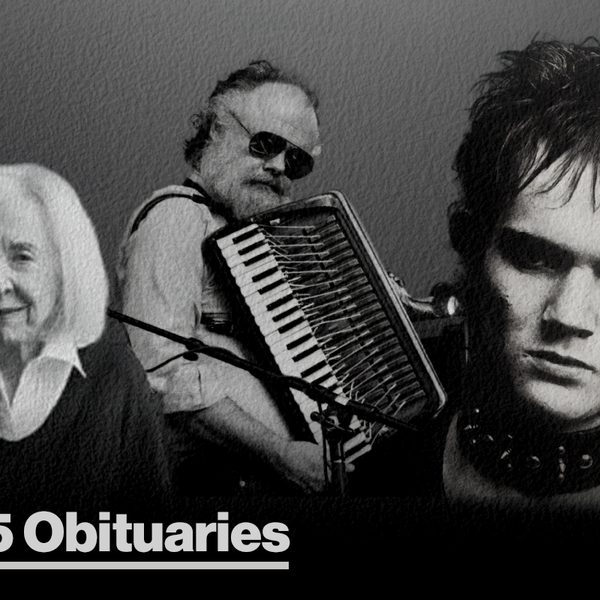
By David Farrell
What Was Said
The following is an excerpt from a speech given by CRTC BC & Yukon regional commissioner Stephen B. Simpson at the annual Assoc. of BC Broadcasters conference in Kelowna on May 16.
We live in a world that has become more fast-paced and more connected and with so many options, we have to make choices in order to consume the content that appeals to us the most. Canadians have shown a preference for sources that offer local content – and the appetite for this kind of content is growing. Particularly in radio.
And as for conventional television broadcasters, it’s no secret that the times we are in have had a much more pronounced effect on them. Digital online offerings have made them particularly vulnerable to a soft advertising market.
Wait a minute… this is the speech I gave to the British Columbia Association of Broadcasters (BCAB) in 2009.
My speech to you then was reflecting on a world in the midst of financial turmoil, to be sure, and that in parallel the broadcasting world was on the cusp of major change. Change driven by new technologies, greater variety of content offerings on an ever-expanding number of platforms, all resulting in changing consumer habits and behaviours.
In 2009, I was attending the British Columbia Association of Broadcasters (BCAB) conference for the first time as your Commissioner for British Columbia and the Yukon. And here we are, almost a decade later, still reflecting on the changes in the broadcasting world… and the really good news is that you’re still here—adapting to change and getting stronger for it.
However, these are my last days at the CRTC and it seems fitting to make my last speech right where I made my first. Here at the BCAB. – Full text here.
More on that later. So enough about me, let’s talk about you.
As is our customary habit, I will first refer back to the CRTC’s latest Communications Monitoring Report. But instead of focusing on the revenues let’s look at what else it is telling us.
From the portent of change I talked about in my first speech to you a decade ago, we are now getting a better grasp on where things are going.
We see that content is still king in the media world.
The report shows that, in 2016, broadcasters invested more than $3.5 billion to create Canadian-made TV, musical and spoken-word content.
That’s great news, but production is only half of this story. We are seeing clearly that the changing landscape of distribution platforms for content is the real story to be followed.
We are seeing that Canadians want to access that content in the ways that suit them best.
The Communications Monitoring Report shows us that weekly viewing of traditional television—especially among those aged 34 and younger—declined in 2016. At the same time, weekly viewing of Internet television became more popular.
Radio listening is following a similar path. Traditional radio listening is also on the decline—again, chiefly among young people—while more than half of Canadians said they streamed audio content online.
These trends are telling and are in part what triggered a request from Minister Joly for the CRTC to prepare a report on the future of audio and video programming in Canada.
Specifically, we were asked to examine:
the distribution model or models of programming that are likely to exist in the future
how and through whom Canadians will access that programming, and
the extent to which these models will ensure a vibrant domestic market that is capable of supporting the continued creation, production and distribution of Canadian programming, in both official languages, including original entertainment and information programming.
advertisement
To inform this report, and so that we may develop as fulsome a public record as possible on the matter, we opened a two-phase consultation.
During phase one, which concluded last fall, we asked Canadians to tell us their views on how they access programming, what they think are the hallmarks of a vibrant domestic content-creation and distribution market, and what policy measures are needed to support that market.
During the second phase of our consultation, we also undertook extensive public-opinion research to even better inform our future-looking report.
This report is to be delivered to the government by June 1 and will be simultaneously released to all Canadian as a completely digital product.
No trees to be killed. Only pixels.
Hamilton, Winnipeg named in top 7 most Intelligent Communities at ICF Forum
In alphabetical order, the Top7 Intelligent Communities of 2018 are:
Chiayi City, Taiwan
Espoo, Finland
Hamilton, Ontario, Canada
Ipswich, Queensland, Australia
Tainan City, Taiwan
Taoyuan, Taiwan
Winnipeg, Manitoba, Canada
Hamilton, Ontario, Canada: The Golden Horseshoe is the region that bends around the westernmost end of Lake Ontario in Canada. At the centre of the horseshoe’s curve is Hamilton, a city of 520,000 known for industry, education and cultural diversity, having the third-largest foreign-born population in Canada. Located 70 kilometres southwest of Toronto (the 2014 Intelligent Community of the Year), Hamilton was once known as the Steel Capital of Canada, producing 60% of the nation’s steel. It is also a successful lake port city and operates an airport that saw passenger traffic grow tenfold from 1996 to 2002. A 30-year economic development plan begun in 2003 set the goal of creating a massive aerotropolis industrial park around that airport to capitalize on its success. Read more
Winnipeg, Manitoba, Canada: Located midway between the two coasts of Canada, Winnipeg is the capital of a province rich in agricultural and natural resources. In the 21st Century, the city is pursuing economic growth by better-connecting industry and education, while better equipping its large aboriginal population for opportunity. The city has pursued economic growth by connecting industry and education more systematically and leveraging its indigenous geographical and cultural assets. A public-private R&D organization develops technologies and supply chains for high-performance composites based on agricultural materials, while there has been a programmatic attempt to equip its large aboriginal population with digital tools. Read more
StatsCan releases its latest telecommunications report
In 2016, operating revenues for the telecommunications industry rose 1.0% over 2015 to $60.9 billion. At the same time, operating expenses increased 1.4% to $47.6 billion. As a result, the industry generated a 21.8% operating profit margin.
Mobile services (including paging) and Internet services were largely behind the growth in the industry. These services were the only ones to post an increase. Internet services revenues rose 9.9% to $10.5 billion in 2016, while revenues of mobile services (including paging) were up 3.1% to $24.6 billion. Together, mobile services (including paging) and Internet services accounted for 57.7% of industry revenues.
Operating revenues for other services were down. The operating revenues of wired telephony services (local and access services and long-distance services) continued their downward trend, falling 6.0% from 2015 to $10.0 billion in 2016. Data and private line services revenues decreased 4.8% to $5.0 billion.
Operating revenues for cable television services fell 1.2% to $9.3 billion in 2016. This is the second consecutive year of decreased revenues following several years of growth. Cable television services have faced strong competition from online video services over the last few years.
YouTube to launch new music service
The new YouTube music subscription service – previously codenamed ‘Remix’ – has been confirmed and will launch in five markets next Tuesday (May 22).
The audio-visual platform is actually relaunch of the YouTube Music brand, as an app and desktop player which offer “streaming service made for music with the magic of YouTube”.
There is both an ad-supported free tier and a $9.99-per-month package called YouTube Music Premium. The re-launch will introduce the service in Canada later this year - MBW
Senate votes to preserve Obama-era net neutrality
The Obama-era rule prevented providers such as AT&T, Comcast and Verizon from interfering with internet traffic and favouring their own sites and apps. Critics, including the Trump administration, said over-regulation was stifling innovation.
Three Republicans joined with Democrats in voting to repeal the FCC rule that was scheduled to go into effect next month. The final vote was 52-47.
Republicans who voted against the measure criticized the move as “political theatre” with little chance of becoming law. The threshold Democrats must reach to force a bill on the House floor is much higher than in the Senate. – AP, Boston Herald
BBC: Radio could be killed by streaming services
The BBC radio is under threat from streaming giants and must reinvent itself to survive, the corporation's most senior music executive has said.
Just as BBC television faces its toughest competition from Netflix and Amazon, Spotify and other online services are a more fearsome opponent than commercial radio stations when it comes to listeners. – Anita Singh, The Telegraph
Cackle all you want, Roseanne is part of a revival in network TV
It’s alive! It’s alive! After the eye-watering ratings that accrued for the revival of Roseanne on ABC, all of network TV is refusing to die. It just won’t go away. It has, you might say, a reason to live.
This week, the traditional upfront presentations for ABC, NBC, CBS and Fox are taking place in New York – lavish parties at which advertising execs are flattered, coaxed and cajoled into committing money to shows that, well, hardly any cool publication will write about, ever. But that people will watch. Oh yes they will. About 18 million in the United States and 2.2 million in Canada watched weekly as the nine-episode Roseanne reboot rolled out. – John Doyle, The Globe & Mail

















